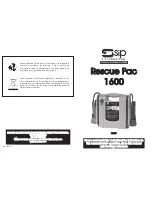
22
Operating Instructions for applications
other than pet nail grooming
hand. Allow the accessory to do the
work.
Usually, it is best to make a series of
passes with the tool rather than attempt
to do all the work in one pass. To make
a cut, for example, pass the tool back
and forth over the work, much as you
would a small paint brush. Cut a little
material on each pass until you reach
the desired depth. For most work, the
deft, gentle touch is best. With it, you
have the best control, are less likely to
make errors, and will get the most effi -
cient work out of the accessory.
▶ “On/Off” / Speed Switch
T h e t o o l i s c o n t r o l l e d b y t h e b l u e
“On/Off” / Speed Switch
8
located on
the topside of the recessed part of the
housing (Fig. 14).
TO TURN THE TOOL “ON” gently slide
the switch
8
up with your thumb. The
tool will start working at a speed of
8,000 RPM.
T h e s p e e d m a y b e a d j u s t e d d u r i n g
operation by continuing to gently slide
the switch
8
up with your thumb.
▶ Settings for Approximate
Revolutions:
You can refer to the charts on pages
34–36 to determine the proper speed,
based on the material being worked and
the type of accessory being used. These
charts enable you to select both the
correct accessory and the optimum
speed at a glance.
▶ Electronic Monitoring
Your tool is equipped with an internal
electronic monitoring system that helps
t o m a x i m i z e m o t o r a n d b a t t e r y
performance by limiting the current to
t h e t o o l w h e n o v e r l o a d a n d s t a l l
conditions occur. If you stall the tool for
too long, or bind the bit in a work piece,
especially at high speeds, the tool will
automatically turn itself off thanks to
t h e f a l l b a c k b u i l t i n t o i t . O n c e t h i s
happens, slide speed switch to “0”
position, simply take the tool out of the
material you were stalled in, turn it back
on again, adjust the speed if necessary,
and continue using it. When the battery
is close to empty, the tool may shut
down automatically more frequently
than normal. If this happens, it is time
to recharge the tool.
▶ Needs for Slower Speeds
C e r t a i n m a t e r i a l s , h o w e v e r , ( s o m e
p l a s t i c s , f o r e x a m p l e ) r e q u i r e a
relatively slow speed because at high
speed the friction of the tool generates
heat and causes the plastic to melt.
Speed Setting
Speed Range
1
8,000 RPM
*2
14,000 RPM
3
21,000 RPM
4
25,000 RPM
*2 is the maximum speed setting for
wire brushes.
7
8
Fig. 14
1600A01P55.qxp_7760-PGK 4/15/19 9:56 AM Page 22
















































